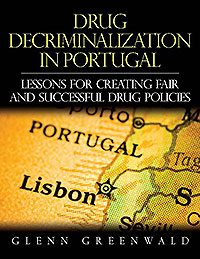I’ve written in the past about the case of Savanna Redding, a now 19 year-old woman who, when she was thirteen years old was strip-searched by officials at her Arizona school who were convinced that she was concealing a banned substance; Advil.
As it turned out, Savanna had no drugs on her, but the strip search is something she’ll never forget, and, yesterday, her case against the school officials who did this to her was argued before the Supreme Court of the United States:
An important case at the Supreme Court sometimes informs as much about the justices as the issue at hand, and yesterday’s animated hearing on whether school officials have the right to strip-search a 13-year-old female student seemed just such a case.
Justice Stephen G. Breyer wondered if the incident was much different from the experience of disrobing for gym class. Justice Anthony M. Kennedy affirmed his deep concerns about illicit drugs. Justice Ruth Bader Ginsburg seemed at times on the edge of exasperation with her all-male colleagues. And Chief Justice John G. Roberts Jr. searched for a way to make the issue go away.
But it was Justice David H. Souter who seemed to sum up the dilemma for a majority of the court. He put himself in the place of a school official balancing the need for keeping his young charges safe from drugs while respecting the constitutional protections even middle school students should receive.
“My thought process is, I would rather have the kid embarrassed by a strip search, if we can’t find anything short of that, than to have some other kids dead because the stuff is distributed at lunchtime and things go awry,” Souter said.
As ScotusBlog’s Lyle Dennison notes, the Justice’s questioning seemed to indicate that their decision in this case will be motivated by fear more than anything else:
With an undercurrent of fear running across the Supreme Court bench about drug abuse among school students, and a perception that young people will try hard to avoid detection, the Justices searched anxiously on Tuesday for a way to clarify — and perhaps to enhance — public school principals’ authority to conduct personal searches of the youths in their charge.
(…)
No more telling illustration of the Court’s mood emerged than Justice David H. Souter — whose vote would almost have to be won for student privacy to prevail – expressing a preference for “a sliding scale of risk” that would add to search authority — including strip searching — based on how school officials assessed whether “sickness or death” was at stake.
“If the school official’s thought process,” Souter asked, “was ‘I’d rather have a kid embarrassed rather than some other kid dead,’ isn’t that reasonable under the Fourth Amendment?” Stated in that stark way almost compelled agreement, without regard to whether a student singled out for a strip search was actually adding to such a risk, but was only the target of a classmate’s unverified tip.
Along with Souter, two other Justices whose votes might turn out to be crucial — Stephen G. Breyer and Anthony M. Kennedy — were plainly more concerned about the drug problem than with student privacy. Both of those Justices, in past cases involving students and suspected drug use, have suggested that students’ rights were not very sturdy.
You can read the full transcript of yesterday’s oral argument in the case here.
Given this, I find myself in agreement with Radley Balko, who says that the reports from yesterday’s oral argument are not encouraging at all for anyone who believes in civil liberties:
Can anyone think of a single incident in the last 30 years in which several children have died after ingesting drugs distributed by one of their classmates on school grounds? Before we let school principles go rummaging through the panties of underage girls, shouldn’t we be at least be able to cite a few examples?
It’s a little troubling to see how comfortable these old men (Ginsburg isn’t quoted in the article) seem to be with allowing school administrators access to the genitalia of school children based on nothing more than a hunch that they might be “crotching” some ibuprofen.
And Steve Verdon notes that the school officials could have exercised just a small degree of common sense:
The strip search was based on a snitch’s statements, something that should be taken with a shovel of salt. When you are down to the underwear and you haven’t found drugs on a student with no history of drug abuse, good grades, good attendance, and no other indicators of being a problem student maybe it is at that point that you should call the child’s parents and involve them.
I summed my own opinions about this story up last month:
I cannot imagine any circumstances where it should be acceptable for school officials to strip search a child. If there is some suspicion that a crime was committed, then the matter should be turned over the police — in which case she couldn’t have been strip-searched until she was actually placed under arrest.
It is, however, John Cole who comes away with the quote of the day on this story:
I can state that as someone with an IQ over room temperature, the fact that we are debating whether it is appropriate for school authorities to strip search kids is a sure sign that something has gone horribly, horribly wrong with this country and our sense of perspective, and I blame the war on drugs.
The fact that Supreme Court Justices, and likely a large segment of the American public, can’t recognize that makes it all even more troubling.
C/P: Below The Beltway


